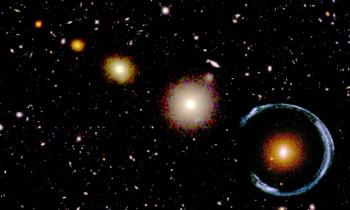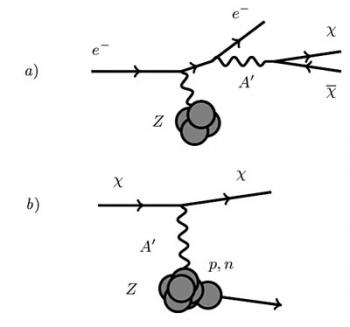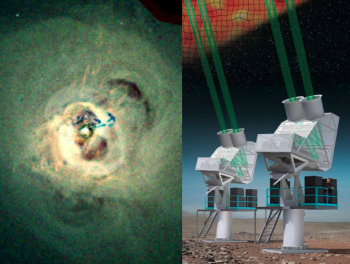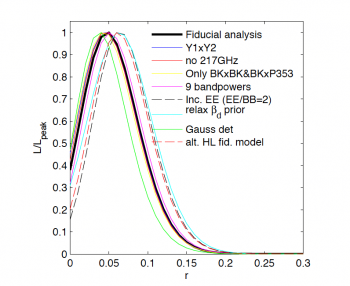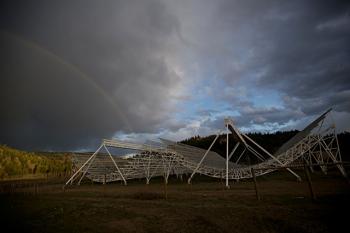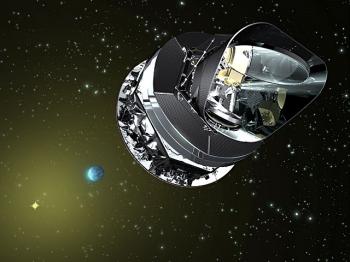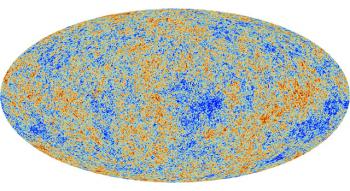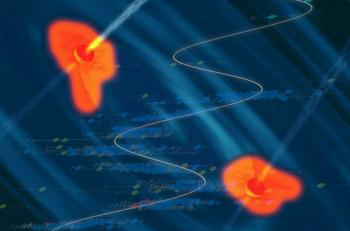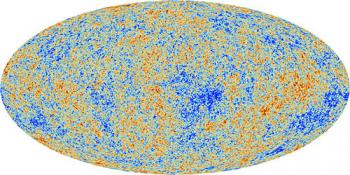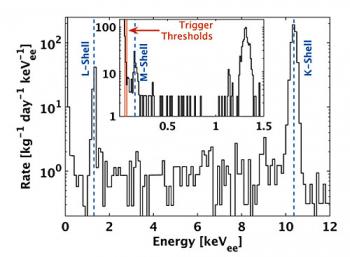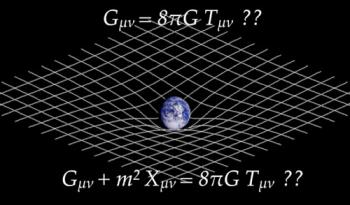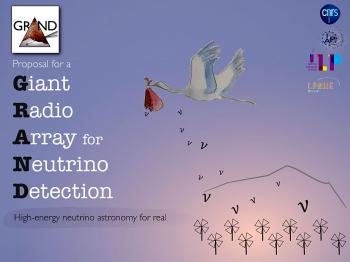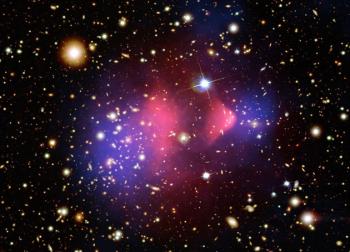 |
 |
 |
 |
 |
 |
 |
 |
 |
 |
 |
 |
|
Talks & Events
|
KICP Friday Noon Seminars: 2015
First results from the High Altitude Water Cherenkov Observatory Dark matter halos as particle colliders Astrophysical observations of structure can be used to study the non-gravitational particle interactions of dark matter. I discuss small scale structure anomalies for cold dark matter and their possible implications for dark matter physics. New results on cluster scales provide a new important handle for constraining dark matter's particle interactions. Observing the Assembly of Dark Matter and Baryons in Massive Galaxies Massive galaxies are central to many pressing questions in galaxy formation and cosmology. Observations of the evolving distributions of baryons and dark matter within massive galaxies can constrain the astrophysical processes that drive their formation and growth. In the first part of the talk, I will present results from a program aimed at understanding the assembly of the stellar halos of massive galaxies over the last 10 Gyr. Beginning as compact "nuggets" at z~2, these galaxies undergo a remarkably rapid period of growth. By combining HST imaging with unique spectroscopic surveys conducted on large telescopes, I will show how measurements of the sizes, stellar populations, internal dynamics, and satellite systems of z>1 massive galaxies have provided new insights into their remarkable growth. In the second part, I will turn to the dark matter distribution at the centers of massive galaxies and clusters. Through a synthesis of multiple observational probes, including strong lensing, weak lensing, and stellar dynamics, I have constrained the slope of the inner dark matter density profile. Surprisingly, this analysis implies a slope that is shallower than the universal CDM profile in the central ~30 kpc of massive clusters. I will review attempts to explain this finding in recent numerical simulations as a consequence of the "back-reaction" of baryons on their host halos, or alternatively as a possible probe of dark matter microphysics. Decisively probing sub-GeV vector-portal dark matter with next generation electron-beam experiments In a broad class of consistent models, MeV to few-GeV dark matter (DM) interacts with ordinary matter through kinetically-mixed vector mediators ("dark photons"). We outline a two-pronged experimental program to decisively test nearly all such scenarios. The first prong involves placing a suitable meter-scale detector downstream of an existing electron beam-dump to directly observe DM produced in electron-nucleus collisions. Once produced, the DM scatters in the detector and induces highly-energetic electron or nuclear recoils. This approach can explore a well-motivated and otherwise inaccessible region of DM parameter space with sensitivity several orders of magnitude beyond existing direct detection and LHC constraints. This approach would also probe invisibly decaying dark-photons down to kinetic mixing of epsilon ~ 10^{-4}, including the range of parameters relevant for explaining the (g-2)_{mu} discrepancy. The second, more powerful prong of this discovery program relies entirely on the distinctive kinematics of the DM production in electron-nucleus interactions. In this setup, individual electrons are fired through a thin target adjacent to a tracker and calorimeter. If DM particles are produced as the electron passes through the target, they carry away a large fraction of the incident electron's electron energy. Surprisingly, with suitable trigger and kinematic requirements, such events serve as powerful probes of DM-electron interactions and can explore kinetic mixing parameters down to epsilon ~ 10^{-7}, which covers nearly all the parameter space consistent with a thermal relic abundance, thereby testing all vector-portal models that have ever achieved thermal equilibrium with the Standard Model. Double Feature: ''SZ and AGN'' and ''The Cosmology Large Angular Scale Surveyor'' Part 1: Evidence is mounting that Active Galactic Nuclei (AGN) are responsible for the lack of star-formation in the most massive galaxies. Attention has been drawn to the role of energetic radio-mode feedback from AGN in heating the gas around massive halos and preventing star-formation. I will present the first measurement using the Sunyaev-Zel'dovich (SZ) effect of the pressure of the gas around radio-loud AGN. Part 2: The Cosmology Large Angular Scale Surveyor (CLASS) is a project to measure the imprint of gravitational waves from inflation in the polarization of the cosmic microwave background. I will present an overview of the CLASS strategy for measuring the E-modes and B-modes from both recombination and reionization and give an update on the project status. Joint Analysis of BICEP2, Keck Array, and Planck BICEP2, a CMB polarization experiment that operated at the South Pole from 2010--2012, reported a detection of B-mode polarization at degree angular scales in March of last year. While this result was initially interpreted as evidence for primordial gravitational waves from inflation, new data from the Planck satellite has shown that polarized emission from Galactic dust is brighter than what was assumed. I will report on the just-released joint analysis of data from BICEP2, the Keck Array (successor to BICEP2 at the South Pole), and Planck. I will also discuss the prospects for improving this measurement in the near future with data at 100 and 220 GHz from Keck Array and BICEP3. Consistency Relations for Large Scale Structure Consistency relations for LSS are general, non-perturbative statements about correlation functions of density perturbations. They relate the squeezed limit of an (n+1)-point function with the corresponding n-point function. I this talk I will review the derivation of the consistency relations in the non-relativistic limit and full GR, and show how these results can be applied in constraining the Equivalence Principle on cosmological scales and the BAO reconstruction. What's Next for Cosmology with Type Ia Supernovae We are currently in the midst of a huge explosion in the number of Type Ia Supernovae we've found to better determine cosmological parameters. With the release of Pan-STARRs data, the start of the Dark Energy Survey, and multiple surveys at both low and high-redshift, our statistics will soon improve by an order of magnitude. At the same time, analysis of the systematic uncertainties of these large samples has never been more difficult - there are still questions of how to understand the relationship between supernovae and their host galaxies, and how well we can calibrate all the various samples we wish to join. During this talk, I will give a tour of the current state of cosmology with Type Ia Supernovae and how things will look different within this next year and next few years. I will show some initial results from the new Pan-STARRs cosmology analysis. I will give an update on the current status of the supernova analysis with the Dark Energy Survey. I will also discuss a new low-z survey called the Foundation survey and discuss how recent findings may affect the local H_0 measurements. I will also discuss results from measurements of high-z SNe with the Hubble Space Telescope, and explain how the significance of these measurements depends on the parameterization of the equation-of-state w(z). This understanding is crucial for planning of the WFIRST mission in the next ten years, and I will present first simulations for this survey and how we can assess various strategies. There is an incredible amount of supernova data on its way, and I hope to give a sense of what to expect. Indirect Detection of Dark Matter with Gamma Rays Evidence for dark matter is overwhelming. From experimental data we can infer that dark matter constitutes most of the matter in the Universe and that it interacts very weakly, and at least gravitationally, with ordinary matter. However we do not know what it is. Several theoretical models have been proposed that predict the existence of Weakly Interacting Massive Particles (WIMPs) that are excellent dark matter candidates. The existence of WIMPs can be tested indirectly, primarily through their annihilation or decay into photons. In this talk I'll present the latest results on these searches. Near-IR Background Fluctuations Results from the Cosmic Infrared Background Experiment The galaxies responsible for the reionization of the intergalactic medium at z > 6 produce fluctuations in the diffuse near-infrared background that can be detected by an instrument sufficiently sensitive to surface brightness fluctuations. The Cosmic Infrared Background Experiment (CIBER) was designed to make this measurement, and over the course of four sounding rocket flights has successfully measured the amplitude of the near-IR background fluctuations on arcminute scales. We detect an electromagnetic spectrum that is nearly Rayleigh-Jeans with an indication of a turn over at 1.1 microns, a spectrum that is significantly bluer than the integrated light from galaxies. These fluctuations have been interpreted as arising from intra-halo light from old, low mass stars residing in dwarf galaxies or dissociated from their parent galaxies during merging events over the history of the Universe. This population has implications for large scale structure formation, implying the existence of a previously undetected population that may account for an appreciable fraction of the missing baryons in the Universe. Measuring Dark Energy with CHIME The Canadian Hydrogen Intensity Mapping Experiment (CHIME) is a new radio transit interferometer currently being built at the Dominion Radio Astrophysical Observatory (DRAO) in Penticton, BC, Canada. We will use the 21cm emission line of neutral hydrogen to map baryon acoustic oscillations between 400-800MHz across 3/4 of the sky. These measurements will yield sensitive constraints on the dark energy equation of state between redshifts 0.8 -- 2.5, a fascinating but poorly probed era corresponding to when dark energy began to impact the expansion history of the Universe. I will describe the CHIME instrument, the analysis challenges, the calibration requirements, and current status. Gravitational Lensing with ACTPol CANCELLED The gravitational lensing of the CMB has emerged as an important cosmological probe. The lensing signal is sensitive to matter fluctuations on larger scales and at higher redshifts than are accessible through other means. It can also be used in cross-correlation with other surveys to highlight properties of tracer populations. I will show the first results of the measurement of the lensing of the CMB polarization from the ACTPol survey, based on cross-correlation with maps of the cosmic infrared background from the Planck satellite. I will also discuss the constraints on cosmology that will be possible using data from future surveys. Cosmological results from Planck 2015 Planck is an ESA satellite aimed at the observation of the Cosmic Microwave Background. In 2013, the Planck collaboration has released the first results on cosmology based on temperature only data from ~15 months of observations. This year, we released the second round of cosmological results based on full mission data (~30+ months) both in temperature and, for the first time, in polarization. In this talk, I will review a few of the main cosmological results of this year release, showing the main changes with respect to the 2013 release. I will highlight the power of polarization data and show a few cases where polarization allows us to set spectacular constraints on possible extentions of the LCDM model. Gamma-rays from type Ia supernova SN2014J SN2014J is the closest type Ia supernova in the era of space observatories and the first one from which gamma-ray lines have been detected with high significance. The flux of Co-56 lines at 847 and 1238 keV, observed with INTEGRAL, shows that about 0.6 Msun of radioactive Ni-56 has been synthesized during explosion. The line broadening suggests the characteristic expansion velocity of ~10000 km/s. Annihilation of positrons produced during decay of Co-56 makes significant contribution to the continuum below 511 keV. The total mass of the ejecta is consistent with 1.4 Msun progenitor, although the constraints are not very tight. Overall the gamma-ray data are broadly consistent with the expectations for canonical 1D models, such as delayed detonation or deflagration models for a near-Chandrasekhar mass White Dwarf. Pure detonation models or strongly sub-Chandrasekhar models are excluded by the gamma-ray data. Partially Massless Charges and Monopoles In this talk I'll discuss an exotic theory of gravity known as "partially massless" gravity. The linear partially massless theory displays many features analogous to those of electromagnetism, including an electric/magnetic duality. However, the structure of gauge charges is much richer than in E&M. I'll present the analogues of electric point charges and Dirac monopoles and discuss possible applications. Probing New Physics Beyond the Standard Model with Cosmology Cosmological observations have provided us with answers to age-old questions, involving the age, geometry, and composition of the universe. However, there are profound questions that still remain unanswered. In this talk, I will describe ongoing efforts to shed light on some of these questions. The origin of the small anisotropies that later grew into the stars and galaxies that we see today is still unknown. In the first part of this talk, I will explain how we can use measurements of the CMB and the large-scale structure of the universe to reconstruct the detailed physics of very early epochs, when the universe was only a tiny fraction of a second old. In the last part of the talk, I will discuss how we can use observations of the CMB and the large-scale structure of the universe to improve our understanding of another open question in fundamental physics. Cosmological observations and galaxy dynamics seem to imply that 84% of all matter in the universe is composed of dark matter, which is not accounted for by the Standard Model of particles. The particle nature of dark matter is one of the most intriguing puzzles of our time. I will identify cosmological processes in which the particle interactions of dark matter are of relevance and show how we can use current and future cosmological data to probe these interactions both at large and small scales. Re-Examining Astrophysical Constraints on the Dark Matter Model The cosmological model based on cold dark matter (CDM) and dark energy has been hugely successful in describing the observed evolution and large scale structure of our Universe. However, at small scales (in the smallest galaxies and at the centers of larger galaxies), a number of observations seem to conflict with the predictions CDM cosmology, leading to recent interest in Warm DarkMatter (WDM) and Self-Interacting Dark Matter (SIDM) models. These small scales, though, are also regions dominated by the influence of baryons. I will present results from high resolution cosmological galaxy simulations that include both baryons and dark matter to show that baryonic physics can significantly alter the dark matter structure and substructure of galaxies, revolutionizing our expectations for galaxy structure and influencing our interpretation of the Dark Matter model. Probing the environments of supermassive black-hole binaries with pulsar timing arrays While pulsar timing arrays (PTAs) like NANOGrav have not yet detected gravitational waves, they are still giving us useful information about supermassive black-hole binaries in our Universe. In particular, the continuing non-detection of gravitational waves at current sensitivity levels already suggests that dynamical effects other than gravitational-wave emission are either much more or else much less efficient than we previously thought. I will present detailed calculations of the influence of these other effects on the gravitational-wave signal that we hope to detect with PTAs. I will also present results using the actual 9-year data set from NANOGrav that show how models that include effects other than gravitational-wave emission are already favored over models that only include gravitational-wave emission. Finally, I will present results using realistic simulated PTA data that show what conclusions we will be able to draw regarding the environments and the dynamics of supermassive black-hole binaries at ~milliparsec separations over the next several years. Cosmic Flows: cosmology and astrophysics from galaxy velocities Velocity fields are a powerful probe of structure formation and the energy content of our Universe. Additionally, the motion of ionized gas on intermediate scales can be used to measure the clustering of baryons and shed light on galaxy formation and feedback mechanisms. I will discuss techniques that can be used to both constrain cosmology and measure baryon properties. I will also present some preliminary results. Oscillations in the CMB bispectrum Oscillating signatures in the correlation functions of the primordial density perturbations are predicted by a variety of inflationary models. A theoretical mechanism that has attracted much attention is a periodic shift symmetry as implemented in axion monodromy inflation. This symmetry leads to resonance non-gaussianities, whose key feature are logarithmically stretched oscillations. Oscillations are also a generic consequence of excited states during inflation and of sharp features in the potential. Oscillating shapes are therefore a very interesting experimental target. After giving an overview of these motivations, I will discuss how to search for these signatures in the CMB. Fast oscillations are difficult to search for with traditional estimation techniques, and I will demonstrate how targeted expansions, that exploit the symmetry properties of the shapes, allow to circumvent these difficulties. As a member of the Planck collaboration, I will discuss the Planck results that have been obtained using these methods in the bispectrum, as well as a joint search using bispectrum and power spectrum. Due to their low overlap with other non-gaussian shapes, oscillating bispectrum shapes are not exhaustively constrained and a potential discovery is therefore not yet ruled out. My talk will be based in particular on arxiv:1412.3461, arxiv:1505.05882 and Planck publications on inflation and non-gaussianities. WIMP-Search Results from the Second CDMSlite Run The CDMS low ionization threshold experiment (CDMSlite) uses cryogenic germanium detectors operated at a relatively high bias voltage to amplify the phonon signal in the search for weakly interacting massive particles (WIMPs). Results are presented from the second CDMSlite run with an exposure of 70 kg days, which reached an energy threshold for electron recoils as low as 56 eV. A fiducialization cut reduces backgrounds below those previously reported by CDMSlite. New parameter space for the WIMP-nucleon spin-independent cross section is excluded for WIMP masses between 1.6 and 5.5 GeV/c^2. Healthy solutions in the decoupling limit of quasi-dilaton theory Quasidilaton massive gravity is an extension of massive General Relativity to a theory with additional scale invariance and approximate internal Galilean symmetry. In this talk, I will present a detailed study of the spherically symmetric solutions which are free of ghosts, tachyons, gradient instability, and superluminality for all propagating modes in a theory of quasidilaton. Combining Probes of Large-Scale Structure in the Precision Cosmology Era Current and upcoming wide-field large-scale structure surveys, such as DES and LSST, will enable precision measurements of various observables of large-scale structure, such as weak lensing, galaxy clustering, and the abundance of galaxy clusters. These observables probe different aspects of cosmic structure formation, and combining them improves constraints on cosmology significantly. However, these observables probe the same underlying density field, and the information content is correlated. Additionally, they share correlated (astrophysical and observational) systematic effects. In this talk I will introduce the analysis concepts for the joint analysis of probes of large-scale structure currently under development for CosmoLike, a fast and self-consistent LSS likelihood analysis package. Using a simulated DES combined probes analysis as an example, I will discuss cross-correlations of observables, and modeling and mitigation of systematic uncertainties affecting multiple probes, and in particular give a quantitative comparison of different weak lensing systematics. Observing the transient sky with the highest energy multi-messengers Kumiko Kotera In the transient sky are found the most violent phenomena in the universe. The energy production and release of these events is mysterious. Very high energy messengers (photons, neutrinos and cosmic rays at energies >10^14 eV) offer a unique perspective to their study. Transients are indeed the best known sources capable of supplying enough energy and flux to astroparticles at the observed level. In this talk, we will focus on some of these powerful objects (young pulsars, millisecond pulsar systems, superluminous supernovae) and explore their capability to produce the highest energy particles, by building comprehensive scenarios of acceleration, escape and propagation. We will estimate the expected signatures of these scenarios, and compare them to the latest multi-wavelength and multi-messenger data, in order to constrain the source properties. In particular, the expected neutrino signatures will be a good target to be probed by the Giant Radio Array for Neutrino Detection (GRAND) project, that aims at detecting high-energy neutrinos with a 100'000 km2 radio antenna array in the Tianshan mountains in China. Superfluid Dark Matter I will talk about a novel theory of dark matter superfluidity that matches the success of LCDM model on cosmological scales while simultaneously reproducing the MOND phenomenology on galactic scales. Image credit: NASA/CXC/SAO Lensing and Other Results from ACTPol Surveys of the CMB from ground-based observatories have revealed much about cosmology, in particular by measuring effects on CMB photons since recombination. In this talk, I will summarize results from the ongoing ACTPol survey, highlighting in particular the measurement of gravitational lensing by matter between us and the CMB recombination surface. I will discuss challenges with these measurements and also look forward to what will be possible with upcoming surveys such as SPT-3G, AdvACT, and CMB-S4. Stellar Explosions, Strongly Lensed The Hubble Space Telescope Frontier Fields survey has been extending the reach of HST by targeting massive galaxy clusters that act as cosmic telescopes: using gravitational lensing to amplify the light of distant objects. This makes it possible to detect the explosions of stars that formed when the universe was less than a few billion years old. It also yields a small but special sample: highly magnified supernovae that serve as sensitive probes of the lensing cluster's dark matter potential. I will describe some of the recent discoveries from this program, including a highly magnified Type Ia supernova, a peculiar fast transient observed twice in a multiply-imaged galaxy, and an ancient supernova being multiply imaged by both a galaxy and a galaxy cluster. I will also look ahead to discuss how HST, JWST and WFIRST can help develop strongly-lensed supernovae into a powerful new tool for studying dark matter and dark energy in the next decade. |

